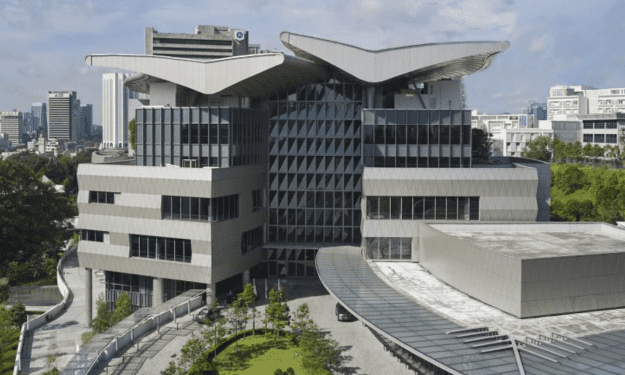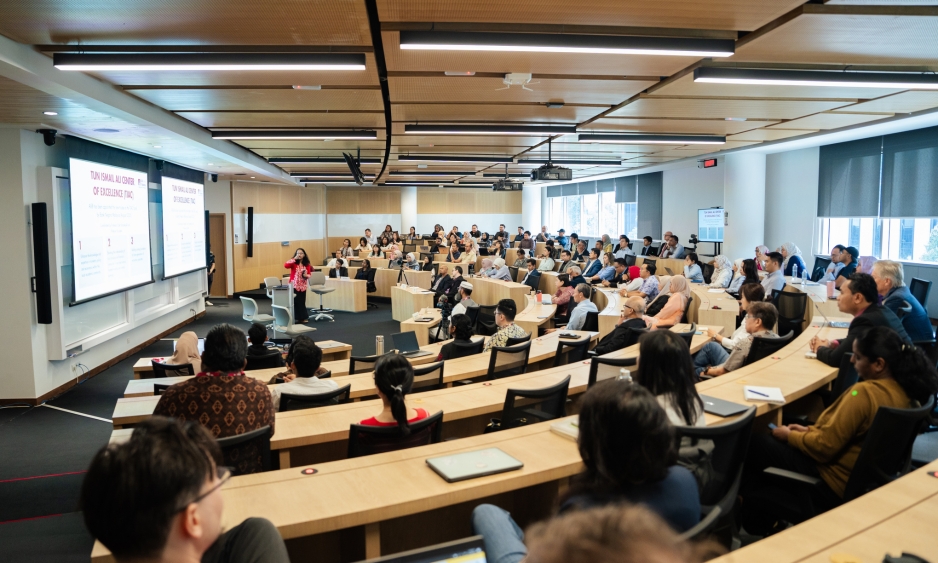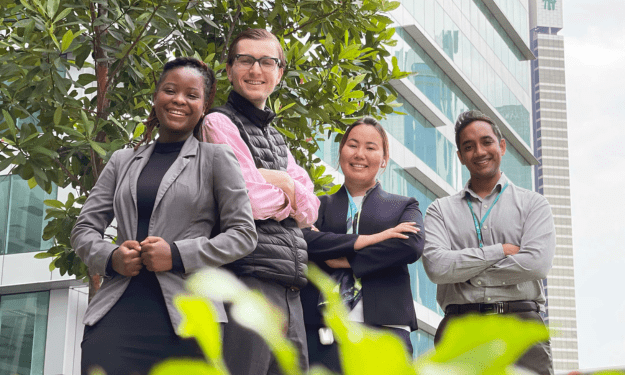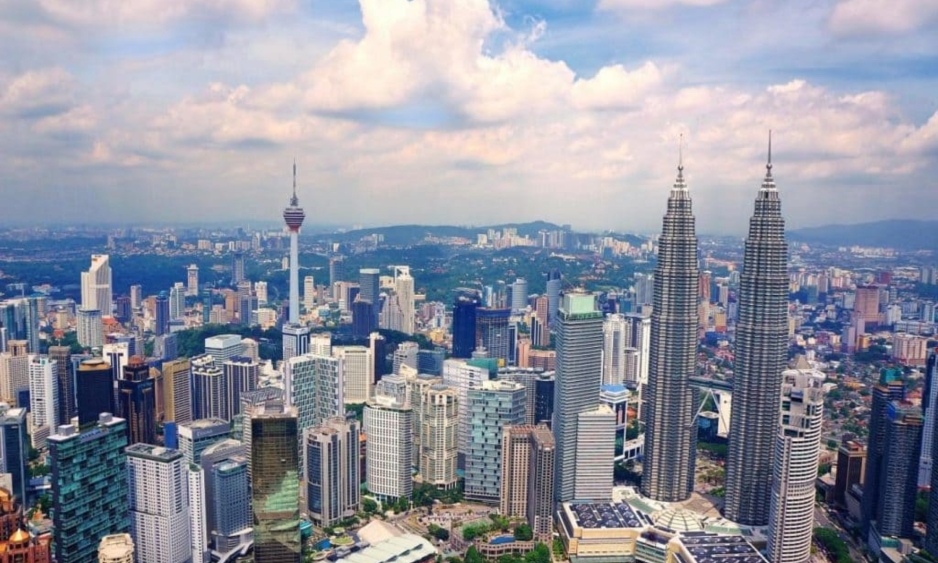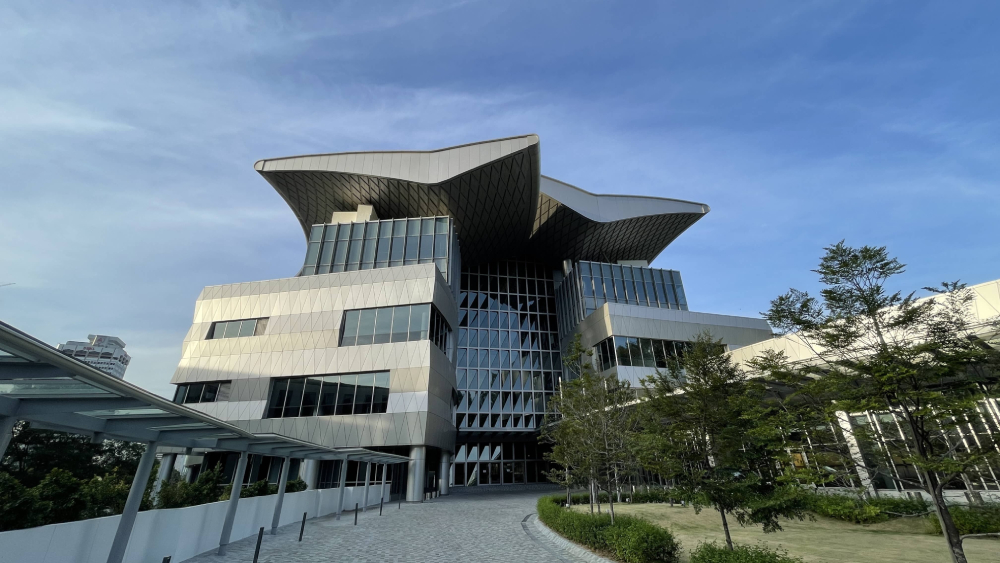Construction on new campus at Asia School of Business was completed in 2020, but COVID-19 restrictions delayed opening for students and staff. When the first two MBA classes of Asia School of Business (ASB) graduated in 2018 and 2019, they were already navigating uncharted waters. Founded in 2015, ASB was a new school with an unconventional model and little in the way of a recognizable brand.
Then the pandemic hit, and the graduates were forced to forge fledgling careers amidst unprecedented turbulence. To see how its pioneering students were faring, ASB sent a survey to its first two cohorts late last year. The results were encouraging if not somewhat surprising: Even as global firms contracted operations and tightened their hiring process to adapt to the spreading pandemic, 79% of graduates were employed, 9% were entrepreneurs and 5% were continuing their education.
Perhaps more eye-popping, 80% of them have been promoted at least once within three years of graduation, and a quarter had been promoted twice. “As a business school, we are still relatively young, relatively small and without a brand,” Sean O. Ferguson, senior associate dean, tells Poets&Quants. “But I think what our students have brought to the table has really helped make the case for themselves in different markets, and we’re really proud of that.”
Flourishing Alumni, Despite A Pandemic
Late fall is the season for the B-school jobs report. The reports provide an employment snapshot for their latest MBA graduates. This year’s theme: resilience in an unprecedented pandemic. (See other schools jobs reports here.) This report from ASB is a little different. It’s not a full-on jobs report per se, but a look at how its first two cohorts are managing in uncertain times.
The school found that its alumni were flourishing, pointing to several key outcomes:
- 79% of alums work in some of the globe’s most recognizable companies. These include leading AirAsia, Amazon, Grab, LEGO, McKinsey, Samsung, Uber, Novo Nordisk and Microsoft.
- 24% of alums report directly to the C-suite of their companies.
- The average salary of ABS ‘18 alumni is $135,144, compared to the $133,865 average of MBAs from schools on the Financial Times’ 100 top Global MBAs three years after graduation.
- On average, ASB alums achieved 13% annualized salary growth in advanced economies while those working in emerging economies achieved 16% growth. This outperforms the salary growth of the Financial Times Top 100 Global MBAs which averaged 5.7% in developing Asia, 3.3% in the U.S., and 2.5% in Europe.
“I think the salary progression since graduation tells the best story,” Ferguson says. “I think this speaks to our students really performing well in the market, taking our action learning based curriculum and really demonstrating impact in their companies.” The school also notes that while the 2020 market is closer to 2018 than 2019 due to COVID-19, 94% of the Class of 2020 accepted offers that averaged a still-impressive PPP-adjusted salary of $103,915.
The chart below, provided by ASB, shows how the classes are doing in more detail.
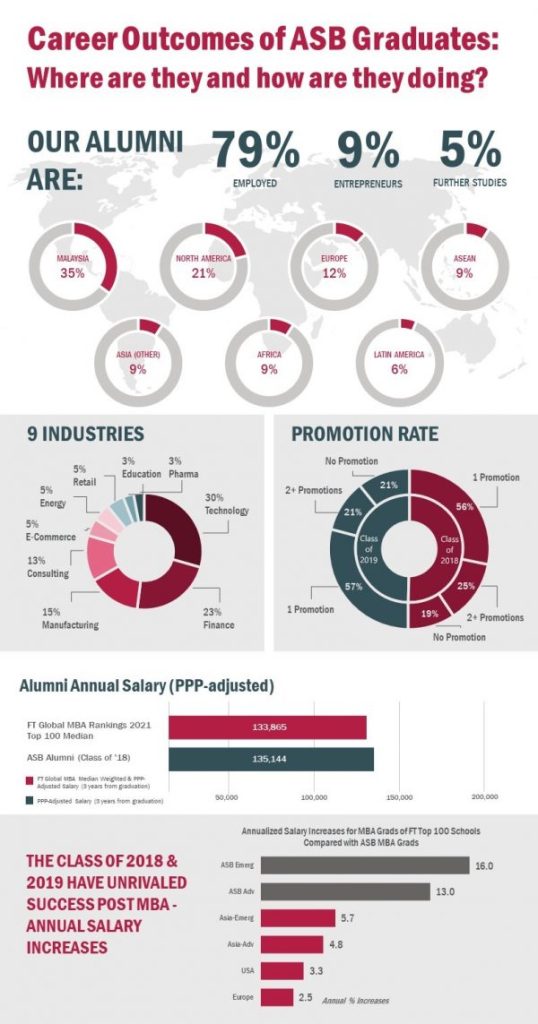
A look at the career outcomes for the ’18 and ’19 MBA cohorts. (ASB graph)
‘Experiential Learning on Steroids’
Asia School of Business opened in 2015 in Kuala Lumpur, Malaysia, as a partnership between MIT Sloan School of Management and Bank Negara Malaysia, the country’s central bank. Long-time MIT professor Charles Fine, now ASB’s founding president and dean, mapped out the concept on a blank sheet of paper: A 20-month MBA program with about a third of the curriculum devoted to experiential learning.
That includes a required team project each semester and one individual project in the summer for a total of five major projects with five different companies. In 2020, P&Q named it one the top 10 B-school innovations in the world. Declaring ASB the place “where experiential learning is on steroids.”
Ferguson attributes its graduates’ success to this focus on action learning. As an example to this kind of experiential learning, he cited a recent operations practicum where students worked on creating sustainable supply chains for Malaysia’s palm oil industry. The practicum is through the school’s Center for Sustainable Small-Owners (CSS). The video below documents the students’ work.
According to the ASB alumni survey, 80% of schools first two cohorts had received promotions within the first three after graduation; 25% had received two or more promotions.
13% Annualized Salary Growth for ASB MBAs
When school officials first started drilling down on the numbers from their graduate survey, they thought the salary progression might be attributed to faster growth and opportunities in Asia’s emerging markets. But ASB graduates working in advanced markets – such as the U.S. and Europe – also showed much stronger salary progression:13% progression for ASB graduates compared to 3.3% (U.S.) and 2.5% (Europe) salary progression for graduates from FT’s ranked schools.
Then, ASB looked at the promotion rates three years after graduation: 80% of ASB graduates were promoted at least once, with 25% promoted twice. That more likely led to the higher salary growth.
- Of the 2018 class, 56% were promoted once, 25% promoted two or more times, and 19% haven’t yet been promoted.
- For 2019 graduates, 57% have one promotion, 21% have two or more and 21% have none so far.
“Most schools, if they do action learning, they do it once in the program. Because we do it in each of our five semesters, I think our students develop a competency that allows them to do really, really well in different environments,” Ferguson says.
“When you pair the kind of students that we have – unconventional students who are generally comfortable being uncomfortable – and you put them in settings where they get to apply the tools and the theories they learn in the classroom, we think that is what contributes to their promotability. “We think it reinforces our value proposition.”
ASB Alumni, Where Are They Now?
Graduates from ASB’s pioneering cohorts work around the world. While the majority work in Malaysia (35%), 21% work in North America and 12% in Europe. Another 9% work in ASEAN (Association of Southeast Asian Nations), other Asian countries, and Africa respectively. 6% work in Latin America.
While ASB is strategically located in Malaysia’s capital city, the degree is globally portable, Ferguson notes. “We see Asia as a kind of canvas for training our students. We feel like Asia is the most important economic region in the world because it’s the predominant driver of global growth,” he says.
“When I first came to Asia nine years ago, it was about coming to Asia to do business in Asia. I think what I’ve seen shift is that Asia is now so important to the rest of the world, that you don’t necessarily stay in here for this to be a relevant MBA. Asia is important to companies with headquarters in the U.S., Europe or wherever because every company has to have a point-of-view on Asia. It is going to impact everyone’s bottom line.”
ASB’s graduates’ most popular industry is technology (30%), followed by finance (23%) and manufacturing (15%). Other industries in which the graduates work are listed in the chart below, with both education and pharma making up 3% of graduates.
Six Years of Growth
Five years ago, the inaugural class entering in the fall of 2016, had 47 students. They came from 26 industries, six continents and 12 countries. Today, the school lists 83 MBA students on its current MBA class profile. They are from 29 nationalities with an average of work experience of five years. 70% are international students, while 45% are women.
While the first students lived in a private, upscale hotel and attended classes in Bank Negara Malaysia training facilities, ASB opened a shiny 22-acre campus in 2020. The residential hall, located next door to the academic building in the heart of the city’s business district, can accommodate more than 1,200 students, faculty, and staff.
Ferguson notes that they have room to grow and jokes that they are well equipped for social distancing. Students and staff are still just moving in because of COVID restrictions much stricter than in the United States.
The school is still growing. It started an MBA for working professionals in 2019 and, in November, welcomed the first cohort of its new Master of Central Banking (MCB) program.In October, it introduced changes to its MBA program including greater flexibility, new concentrations, and a greater focus on entrepreneurship, according to the website.
Beginning with the MBA ‘23 class, students can choose to complete an accelerated program in 16 months in order to better capture career opportunities in Asia. New concentrations in Finance & Analytics and Supply Chain were added in response to student feedback and market demand while the Entrepreneurship Trek was expanded to four semesters of the core curriculum.
“We always say that we are looking for people with the frontier mindset. If you think about westward expansion in the U.S., there was a saying to ‘Go west young man or woman.’ I feel like we’re saying, ‘Go east,’” Ferguson says. “I think if you’re frontier minded, and looking to build a globally oriented career, no one has a more compelling value proposition than us.”
